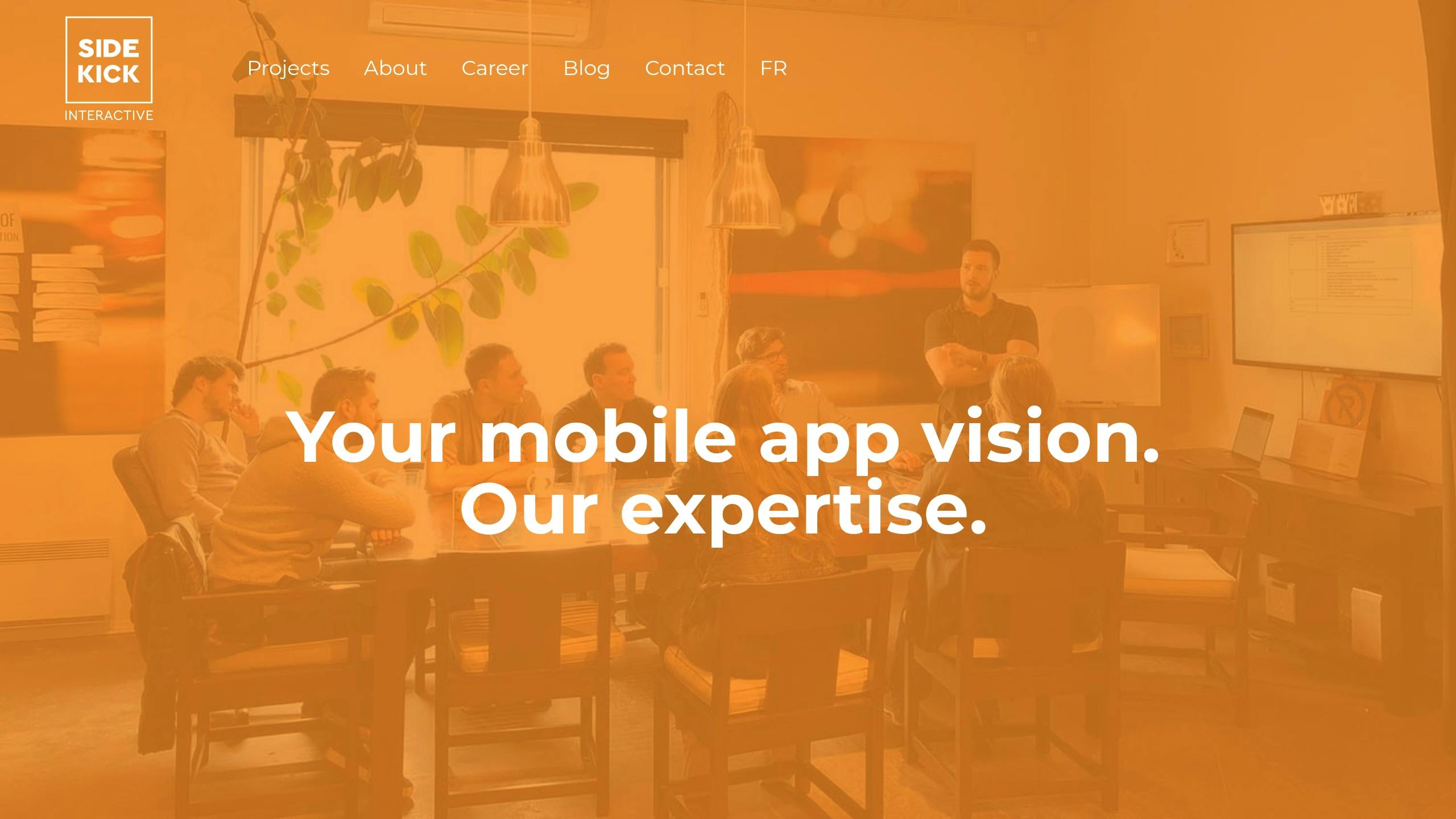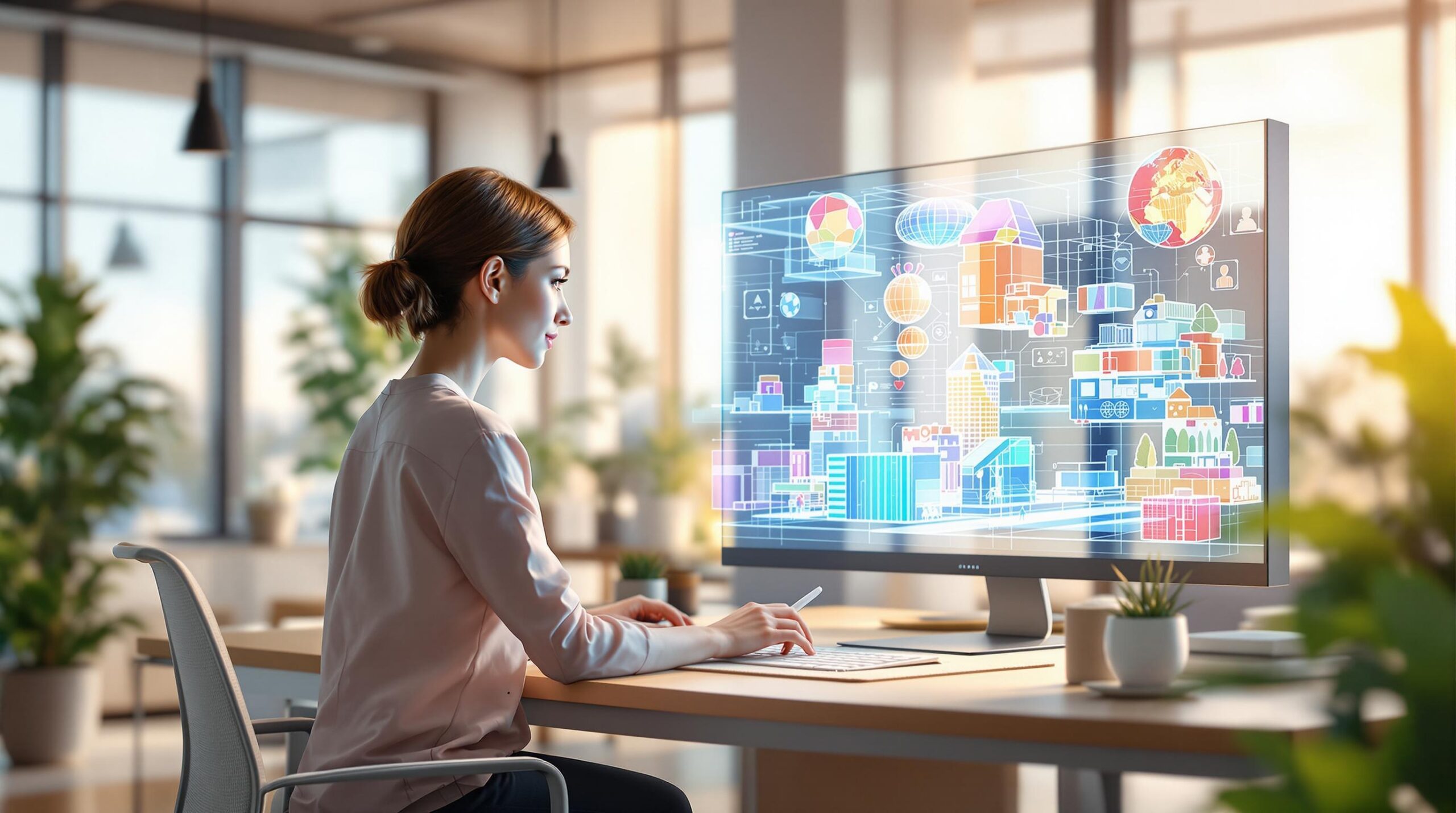Apple Vision Pro introduces a new era of spatial computing, blending digital and physical worlds through its advanced spatial operating system. This guide explains how to design and develop for Vision Pro, covering user comfort, 3D interfaces, and industry applications like healthcare and manufacturing.
Key Takeaways:
- Vision Pro Features: 23 million pixels, eye tracking, hand gestures, and spatial audio.
- Design Tips: Maintain a 30-degree visual cone, use 3-5 depth layers, and ensure interactive elements are at least 60×60 points.
- Development Tools: Xcode, Reality Composer Pro, and visionOS Simulator for testing.
- Industry Use Cases:
- Healthcare: 3D surgical planning and training.
- Manufacturing: Hands-free 3D work instructions.
- Finance: Depth-layered market analysis.
Quick Start:
- Use SwiftUI and RealityKit for spatial apps.
- Test with visionOS Simulator to optimize performance (90 fps recommended).
- Partner with experts like Sidekick Interactive for secure, industry-specific solutions.
This guide simplifies spatial design principles and development strategies, ensuring you can create effective Vision Pro applications.
Principles of spatial design
Design Rules for Vision Pro
Designing for Vision Pro requires attention to three main aspects: user comfort, 3D interface design, and space requirements. These principles align with Vision Pro’s technical features like eye tracking and spatial audio, translating them into effective design practices.
User Comfort Guidelines
To ensure user comfort, keep content within a 30-degree visual cone to minimize neck strain [6][1].
| Comfort Factor | Specification |
|---|---|
| Viewing Distance | 1-2 meters |
| Interaction Zone | Within 50 cm |
| Text Size | Minimum 16pt |
3D Interface Standards
The Vision Pro’s Spatial User Interface (SUI) introduces new ways to organize depth and visuals. Its high-resolution displays (23 million pixels) allow for clear depth layering. For effective depth perception, designers should:
- Use 3-5 distinct layers with at least 20cm separation between them [1].
- Ensure interactive elements are at least 60×60 points in size to support precise hand and eye tracking interactions [1].
A great example of this is the Photos app, which wraps panoramic images around the user’s field of view for an immersive experience [3].
Space Requirements
Proper physical space is essential for creating effective spatial experiences. These configurations also support applications in fields like healthcare and manufacturing.
| Environment Type | Minimum Area | Key Requirements |
|---|---|---|
| Room-scale | 3m x 3m [2][5] | 2.4m ceiling height |
| Seated Use | 1.5m x 1.5m [2] | 1m interaction radius |
| Standing Use | 2m x 2m [2][5] | 0.5-2m vertical range |
Incorporate synchronized visual and audio cues to help users stay oriented and understand interaction boundaries. For shared spaces, design interfaces that adapt to maintain individual zones, enabling collaborative workflows [2][1].
Development Guide
Developers need to combine spatial design principles with the right tools and optimization techniques to bring visionOS interfaces to life effectively.
VisionOS Tools
The visionOS development framework revolves around Xcode and a suite of tools tailored for spatial applications. Key components include SwiftUI for interface design, RealityKit for rendering 3D content, and ARKit for augmented reality functionality [6].
| Tool | Primary Function | Key Features |
|---|---|---|
| Reality Composer Pro | 3D Content Creation | Real-time preview, asset optimization |
| visionOS Simulator | Testing & Debugging | Environment simulation, gesture testing |
| RealityKit | 3D Rendering | Spatial audio, physics simulation |
Performance Tips
To ensure user comfort, maintaining a steady 90 fps is essential for Vision Pro applications [3]. The M2/R1 chipset in Vision Pro handles data from 12 cameras, five sensors, and six microphones [3]. This makes optimization a critical part of development.
Here are some strategies to improve performance:
- Use Level of Detail (LOD) techniques for handling complex 3D models [2].
- Streamline asset loading and unloading to avoid delays [2].
- Simplify shaders and reduce texture sizes to lower processing demands [2].
Testing Methods
Thorough testing is key to meeting performance standards and ensuring user comfort. The visionOS Simulator offers a robust platform for testing before deploying to physical devices.
| Testing Area | Tests |
|---|---|
| Input Methods | Eye tracking, hand gestures, system interactions |
| Environment | Lighting conditions, spatial mapping |
| Performance | CPU/GPU monitoring, frame rate analysis |
For more complex applications, focus on:
- Managing windows across shared and full-space modes [4].
- Testing spatial audio for accurate positioning and smooth playback [3].
- Ensuring responsive interfaces for eye and hand tracking [1].
Combining simulator-based testing with performance profiling helps deliver seamless user experiences.
sbb-itb-7af2948
Industry Uses
The Apple Vision Pro is reshaping workflows across various industries thanks to its advanced spatial computing features. Its applications span healthcare, manufacturing, and business settings, offering new ways to approach complex tasks.
Medical Applications
Mayo Clinic is working with Apple to explore Vision Pro’s potential in healthcare. Dr. Kimberly Kirkwood, Chair of Surgery at Mayo Clinic, highlights its possibilities:
"The technology could allow surgeons to manipulate 3D models of patient anatomy, potentially improving preoperative planning and patient outcomes" [4].
Some key uses include:
| Medical Application | Benefit |
|---|---|
| Surgical Planning | Enables surgeons to interact with 3D models of patient anatomy from CT/MRI scans |
| Medical Training | Offers detailed anatomical exploration with spatial audio guidance |
Factory Solutions
Boeing provides a glimpse into how Vision Pro enhances manufacturing:
- 25% fewer assembly errors using hands-free 3D work instructions
- 15% faster production times [7]
With Vision Pro, workers can follow 3D guides directly overlaid on their workstations, ensuring both speed and precision in production processes.
Business Tools
Goldman Sachs showcases its use in the financial sector:
- 30% faster data analysis and 20% better prediction accuracy through 3D market data visualizations [8]
Financial analysts use depth-layered 3D interfaces to interact with market data, while remote teams collaborate seamlessly via Vision Pro’s spatial video features.
These examples highlight how Vision Pro’s spatial computing can deliver real-world benefits. For companies looking to integrate such solutions, specialized development teams help align the technology with specific industry needs.
Expert Development Partners
When it comes to implementing Vision Pro solutions, having the right technical expertise is crucial. Development partners can help speed up projects while ensuring everything aligns with Apple’s design guidelines and performance benchmarks.
Sidekick Interactive Services

Sidekick Interactive focuses on secure spatial computing projects, especially those requiring strong security measures and advanced technical integrations. Their expertise in 3D scanning and augmented reality directly supports spatial computing needs.
| Focus Area | Implementation |
|---|---|
| Security | Encrypted data storage, HIPAA compliance |
| Integration | Native visionOS development, 3D optimization |
| Testing | Simulator-based spatial environment validation |
Their approach blends spatial environment testing with adaptable UI design. By using visionOS simulator testing early in the process, they ensure smooth functionality and reduce user fatigue.
Specialized Solutions
Integrating AI securely into Vision Pro applications demands expert knowledge. These skills are essential for meeting spatial design goals, including user comfort and 3D interface efficiency.
Sidekick Interactive offers a clear framework for transitioning apps to Vision Pro:
| Stage | Action |
|---|---|
| Planning | Analyze spatial opportunities and security needs |
| Build | Develop natively for visionOS |
| Launch | Validate performance and ensure compliance |
For organizations aiming to make the most of Vision Pro, working with experienced developers can save time and ensure everything meets industry standards.
Next Steps
Key Focus Areas
To excel in Vision Pro development, it’s important to understand spatial design principles while keeping performance at its best. Start by focusing on intuitive gestures, effective depth layering [6], and efficient resource management.
Getting Started
Begin by setting up Xcode and the visionOS simulator [3]. For secure and reliable results, consider working with experts like Sidekick Interactive, who specialize in simulator-based testing and validation.
Here’s a streamlined approach to guide your development process:
- Planning: Outline spatial interfaces and prioritize user comfort.
- Development: Use tools like Xcode and Reality Composer Pro to bring your ideas to life.
- Testing: Rely on the simulator and performance profiling to fine-tune your app.
- Deployment: Ensure compliance with Apple’s guidelines and maintain high security standards.
This method ensures your technical solutions align with practical applications, as highlighted in earlier examples.
For industries like healthcare or manufacturing, where AI integration and sensitive data are critical, working with professionals such as Sidekick Interactive can make a difference. Their experience in fields like healthcare, finance, and IoT ensures compliance while leveraging Vision Pro’s spatial features to their full potential.

